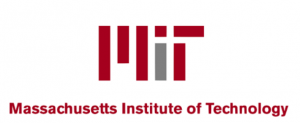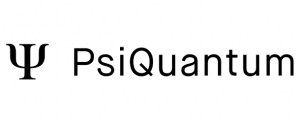Quantum News Briefs June 26: MIT pioneers quantum light source for optical quantum computers & teleportation devices; Microsoft expects to build a quantum supercomputer within 10 years; Indian Space Research Organisation (ISRO) will launch QKD satellite + MORE

Quantum News Briefs June 26: MIT pioneers quantum light source for optical quantum computers & teleportation devices; Microsoft expects to build a quantum supercomputer within 10 years; Indian Space Research Organisation (ISRO) will launch QKD satellite + MORE.
MIT pioneers quantum light source for optical quantum computers & teleportation devices for communication
 Using novel materials that have been widely studied as potential new solar photovoltaics, researchers at MIT have shown that nanoparticles of using novel materials that have been widely studied as potential new solar photovoltaics can emit a stream of single, identical photons. Quantum News Briefs summarizes a June 25 article by David Chandler in Sci.TechDaily.
Using novel materials that have been widely studied as potential new solar photovoltaics, researchers at MIT have shown that nanoparticles of using novel materials that have been widely studied as potential new solar photovoltaics can emit a stream of single, identical photons. Quantum News Briefs summarizes a June 25 article by David Chandler in Sci.TechDaily.
This effort might pave the way to new optically based quantum computers, as well as possible quantum teleportation devices for communication, the researchers say. The results were published on June 22 in the journal Nature Photonics, in a paper by graduate student Alexander Kaplan, professor of chemistry Moungi Bawendi, and six others at MIT.
About two decades ago some researchers proposed the idea of using light instead of physical objects as the basic qubit units. Among other advantages, this would eliminate the need for complex and expensive equipment to control the qubits and enter and extract data from them. Instead, ordinary mirrors and optical detectors would be all that was needed.
“With these qubit-like photons,” Kaplan explains, “with just ‘household’ linear optics, you can build a quantum computer, provided you have appropriately prepared photons.”
The source they ended up using is a form of lead-halite perovskite nanoparticles. Thin films of lead-halide perovskites are being widely pursued as potential next-generation photovoltaics, among other things, because they could be much more lightweight and easier to process than today’s standard silicon-based photovoltaics.
Even though these materials may not yet be perfect, “They’re very scalable, we can make a lot of them. and they’re currently very unoptimized. We can integrate them into devices, and we can further improve them,” Kaplan says.
At this stage, he says, this work is “a very interesting fundamental discovery,” showing the capabilities of these materials. “The importance of the work is that hopefully, it can encourage people to look into how to further enhance these in various device architectures.” Click here to read article in-entirety.
Microsoft expects to build a quantum supercomputer within 10 years
 Microsoft announced its roadmap on June 21 for building its own quantum supercomputer, using the topological qubits the company’s researchers have been working on. Quantum News Briefs summarizes June 21 article by Frederic Lardinois of TechCrunch+.
Microsoft announced its roadmap on June 21 for building its own quantum supercomputer, using the topological qubits the company’s researchers have been working on. Quantum News Briefs summarizes June 21 article by Frederic Lardinois of TechCrunch+.
There are still plenty of intermediary milestones to be reached, but Krysta Svore, Microsoft’s VP of advanced quantum development, told us that the company believes that it will take fewer than 10 years to build a quantum supercomputer using these qubits that will be able to perform a reliable one million quantum operations per second.
“Today, we’re really at this foundational implementation level,” Svore said. We have noisy intermediate-scale quantum machines. They’re built around physical qubits and they’re not yet reliable enough to do something practical and advantageous in terms of something useful. For science or for the commercial industry. The next level we need to get to as an industry is the resilient level.
The next step now is to build hardware-protected qubits — and Svore said that the team is making great strides in its work to build these. These qubits will be small (less than 10 microns on a side) and fast enough to perform one qubit operation in less than a microsecond. After that, the team plans to work on entangling these qubits and operate them through a process called braiding, a concept that has been discussed (mostly as a theory) since at least the early 2000s.
From there, it’s on to build a smaller multiqubit system and demonstrate a full quantum system
Thi is an ambitious roadmap, and given how long it took Microsoft to achieve even the first milestone, we’ll have to wait and see how well the team can now execute. With IBM, IonQ and others aiming for similar results — but using more established methods for building their qubits — we’re in a bit of an arms race right now to move beyond the NISQ era. Click here to read article in-entirety.
Indian Space Research Organisation (ISRO) will launch QKD satellite
 The Indian Space Research Organisation (ISRO) recently announced hat it will launch a Quantum Key Distribution (QKD) satellite. Quantum News Briefs summarizes June 26 article from LATESTly.
The Indian Space Research Organisation (ISRO) recently announced hat it will launch a Quantum Key Distribution (QKD) satellite. Quantum News Briefs summarizes June 26 article from LATESTly.
The announcement came during the inaugural session of the Param Vikram 1000 High Performance Computing Center at the Physical Research Laboratory.
A team of scientists will work over the next two years to propel developments in quantum communication technology. Under this initiative, a team of scientists from PRL, in collaboration with ISRO over the next two years to advance quantum communication technologies.
Notably, ISRO-SAC reached a critical milestone in March 2020 when it demonstrated free-space quantum communication across a 300-meter distance. Building on this accomplishment, PRL’s Thaltej campus launched a series of studies to further investigate the potential of this cutting-edge technology. ISRO During the ceremony, Chairman S Somanath emphasised the team’s competence in short-range optical quantum communication, notably in Ahmedabad, where they successfully communicated data over 300 metres, during the ceremony.
The ultimate goal is to include this technology in ISRO satellites, allowing for closed-loop communication with minimal signal attenuation using QKD. However, additional improvements are required to realise this objective. Somanath underlined ISRO’s commitment to continued technological advancement and incorporation into future satellite launches. Click here to read original IndiaTimes article.
PsiQuantum’s latest quantum computing research sheds light on Elliptic Curve Cryptography vulnerabilities
 PsiQuantum has announced in a new publication, a thorough resource count for how large a quantum computer is needed to impact a commonly used cryptosystem – namely Elliptic Curve Cryptography (ECC) – considering a novel fault-tolerant quantum computing architecture that the company recently introduced.
PsiQuantum has announced in a new publication, a thorough resource count for how large a quantum computer is needed to impact a commonly used cryptosystem – namely Elliptic Curve Cryptography (ECC) – considering a novel fault-tolerant quantum computing architecture that the company recently introduced.
This active volume architecture leverages long-range connections within the quantum computer and results in a 700x reduction in the computational resource requirements for breaking ECC keys relative to state-of-the-art quantum algorithms. This is also orders of magnitude less time to compute than the billions of years required by conventional computers to perform the equivalent task for a 256-bit ECC key.
Secure digital communications, which underpin our modern use of the internet, rests on the success of public-key cryptographic systems. These cryptographic systems work by allowing a user to provide a public key, with which anyone can securely encode messages to them. These messages can then only be decoded with a secret private key held by the user. These keys for encoding and decoding are built from mathematical operations which are easy to apply (for the encoding), but hard to reverse (for the decoding). The difficulty of the decoding relies on the fact that reversing these mathematical operations is an impractically time-consuming task for conventional computers.
Two prominent such schemes are RSA and elliptic curve cryptography (ECC). Both RSA and ECC keys could be easily broken using large-scale quantum computers. Algorithms have been discovered for quantum computers that can, unlike conventional computers, efficiently reverse the mathematical operations at the heart of RSA and ECC.
In this paper, PsiQuantum uncovered architecture-independent improvements to existing ECC quantum algorithms that reduce the number of gates required for breaking ECC keys by up to 80%. The team also conducted a resource estimate for implementing ECC quantum algorithms using PsiQuantum’s newly unveiled active volume architecture technique which led to a reduction in the number of quantum operations needed to crack an ECC key by up to 700x.
The active volume compilation technique is especially applicable to photonic architectures, like that of PsiQuantum’s. This is because the technique relies on the ability to have long-range connections within the quantum computer and currently only photonic architectures have this feature. Unlike matter-based qubits such as ion traps or superconducting qubits, photons have the ability to be easily non-locally connected using conventional optical fiber, as widely used in the telecommunications industry.
Click here to read original article in-entirety on PsiQuantum site.
Sandra K. Helsel, Ph.D. has been researching and reporting on frontier technologies since 1990. She has her Ph.D. from the University of Arizona.





















